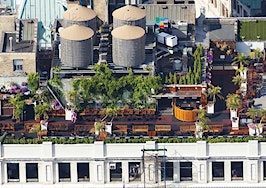Multifamily developers are delivering more sub-1,000-square-foot units and reducing the number of three-bedroom units in projects, according to data provided by the U.S. Census Bureau.
Of the 264,000 units completed in 2014, 36 percent, or 96,000 units, were less than 1,000 square feet. This being the case, it’s no surprise that one-bedroom dwellings accounted for 42 percent of all rental units delivered last year.
Two-bedroom units account for 41 percent of all rentals built, and the median size of all units built in 2014 stood at 1,080 square feet.
The West led the nation’s four regions when it came to building units smaller than 1,000 square feet. According to the bureau’s Characteristics of New Housing statistics, 29,000 of 68,000 units built in the West fell in this category.
In the Midwest, units ranging in size from 1,200 to 1,399 square feet accounted for the largest percentage of units built, 36 percent.
Of the 264,000 multifamily units completed in 2014, the South contributed the highest volume — 112,000. The West followed with 68,000 units delivered, with the Midwest and Northeast completing 45,000 and 39,000, respectively.
Nearly half of all these units, 127,000, were part of projects that featured more than 50 units.
The Northeast stands out as the one region where several noticeable shifts in multifamily building trends occurred during 2014.
The region saw wood frame construction emerge as the primary building method last year, as 57 percent of all units were constructed via this type of framing. During the previous three years, wood frame construction accounted for 44 percent, 36 percent and 38 percent of all multifamily units built.
This increase means the volume of multifamily projects built via steel frame declined to 29 percent. Two years ago, roughly 49 percent of all multifamily built in the Northeast was built with steel frame.
The Northeast also experienced an uptick in the volume of age-restricted units built — 8,000. During 2013, only 1,000 of these units were built. To put it in perspective, roughly 20 percent of all multifamily units built in the region last year were age-restricted.








